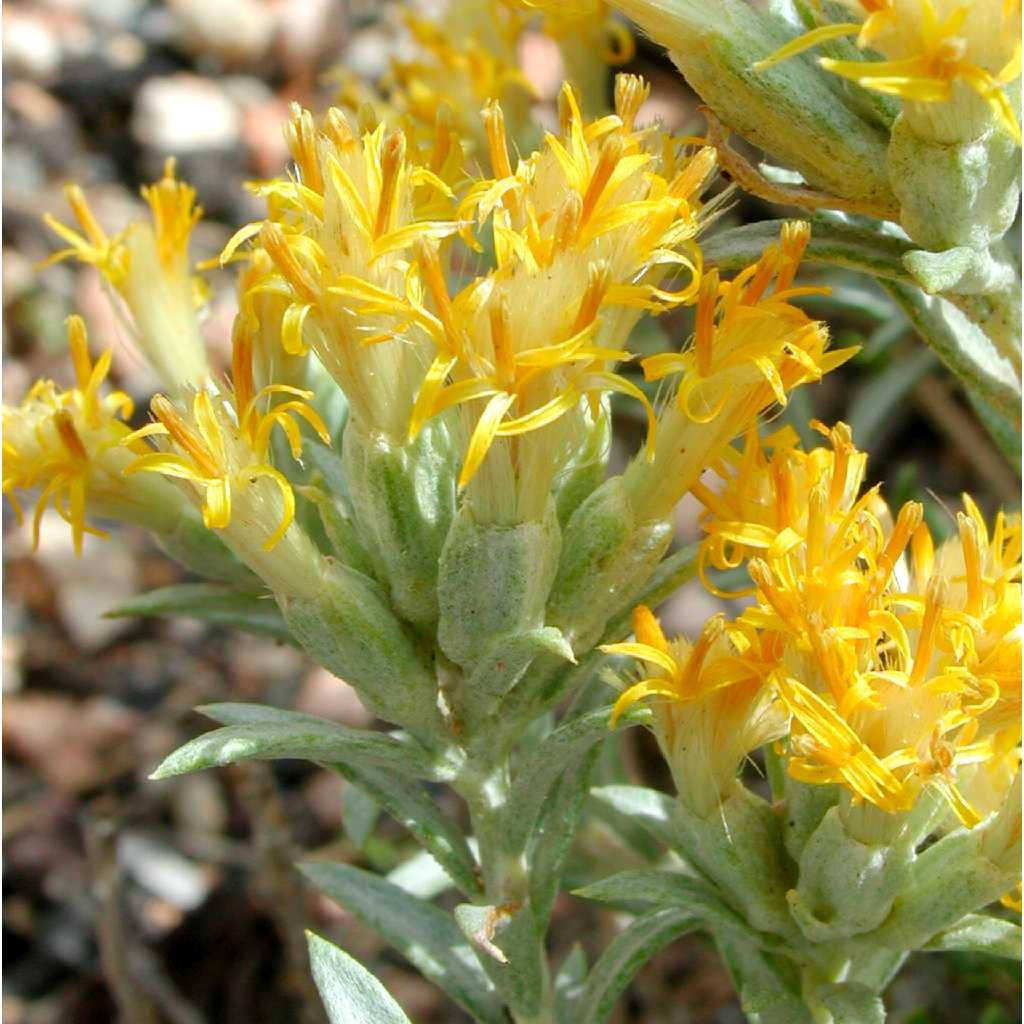Tetradymia
|
Family: Asteraceae |
Shrubs, mostly 30-200 cm. Stems 1-5+, erect to spreading (tomentose to pannose or glabrous, often spiny). Leaves (usually with fascicles of secondary leaves in axils of the primary; primaries sometimes becoming spines) cauline; alternate; sessile (or obscurely petiolate); blades obscurely palmately nerved (usually 1-nerved), linear to filiform, narrowly lanceolate, or oblanceolate, margins entire, faces glabrous or lanate to tomentose, sometimes glabrescent. Heads discoid, (1-3) in distil axils or (3-8) in corymbiform clusters. Calyculi 0. Involucres turbinate to cylindric or hemispheric, 3-10+ mm diam. Phyllaries persistent, 4-6 in 1-2 series, erect, distinct, mostly oblong to ovate or lanceolate, equal or subequal, margins obscurely scarious. Receptacles flat, foveolate, epaleate. Ray florets 0. Disc florets 4-9, bisexual, fertile; corollas cream to bright yellow, tubes longer than funnelform or abruptly dilated throats, lobes 5, recurved, linear to lanceolate; style branches stigmatic in 2 lines, apices usually truncate to rounded-truncate, sometimes truncate-penicillate (appendages essentially 0). Cypselae prismatic to obconic or fusiform, obscurely 5-ribbed, glabrous or hirsute to densely pilose (hairs often obscuring pappi); pappi 0 or of 70-150 bristles or of 20-30, white to stramineous, subulate to setiform scales. x = 30. |

